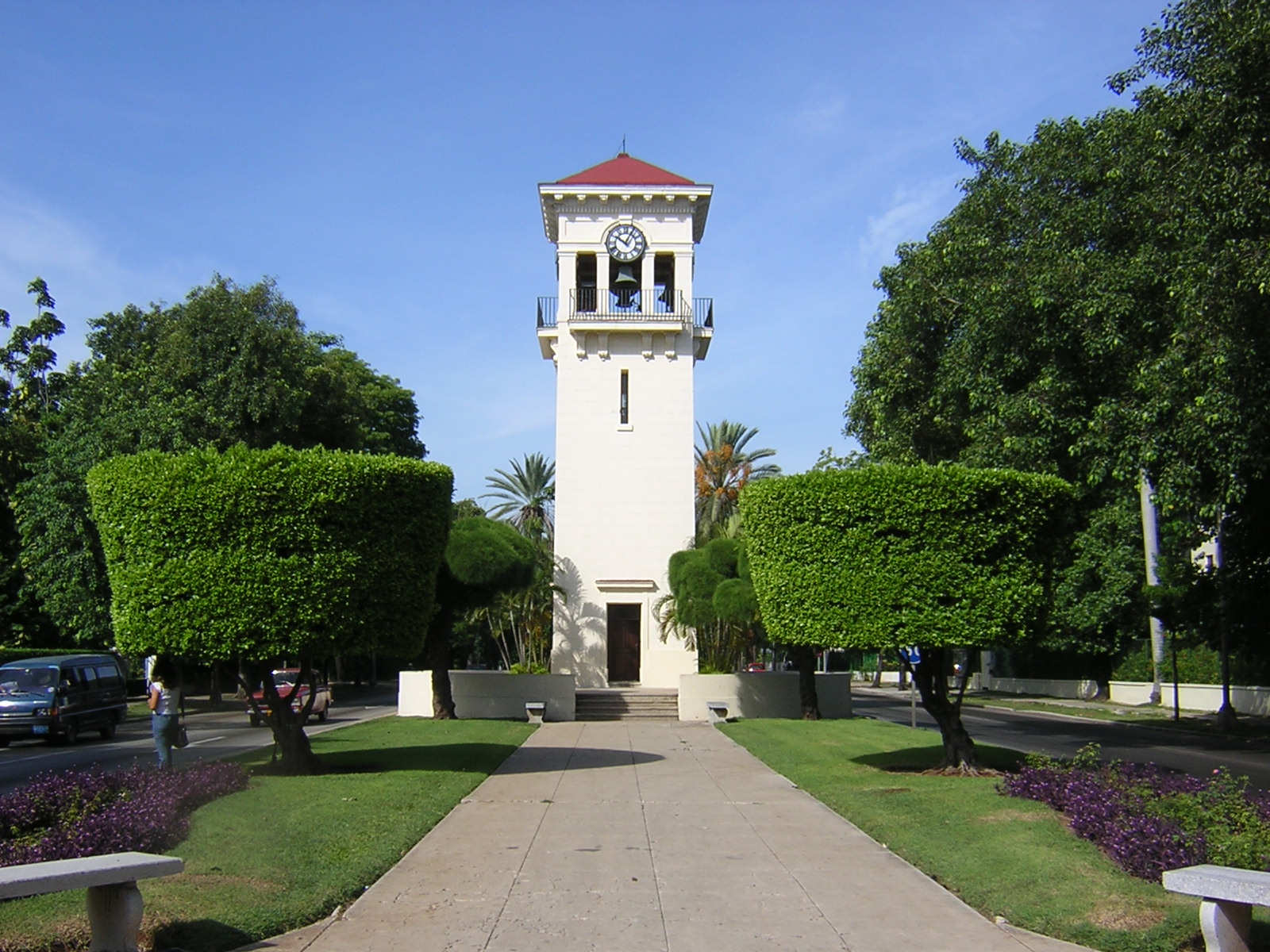INTBAU, the International Network for Traditional Building, Architecture and Urbanism is pleased to announce its next series of annual events in Havana, Cuba following the successes of its 2014 events in Krakow, Poland and 2013 events in Nicosia, Cyprus.
Registration has now opened. Click here to book your place.
The focus of the events will be a conference entitled “Resilience and the Value of Heritage: Learning from Historic Cities,” will examine the urgent agenda of resilient settlement for a rapidly urbanizing world, and the lessons to be applied from – and for – historic cities. What can we learn about more durable, sustainable, adaptable forms of building? What is the value of local traditional patterns, for a globalizing world facing growing challenges? How does the movement for traditional building, architecture and urbanism challenge current orthodoxy, and offer a more promising path forward?
The beautiful city of Havana will provide an intriguing case study. Cuba is a nation under pressure to provide for tourism and other growing industries, while protecting settlements from the increasing threats of chaotic events, including both environmental and economic disruptions. Representatives of other INTBAU chapters from all continents and many kinds of settlements will also share their diverse resources, and explore common challenges.
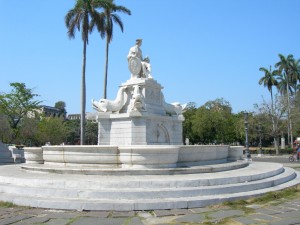
The Fountain of Noble Havana, one of the symbols of the city
Participants can elect to register for the Conference, Tour and Charrette together, or for one or more separately.
The International Conference is organized and led by the Cuban Chapter of INTBAU and will take place in Old Havana, a UNESCO World Heritage Site since 1982, where restoration is king. The participants will be introduced to the history and urban evolution of the city and will appreciate first-hand the system of pedestrian squares that gave the city its polycentric character and the magic and poetry of the so called key to the Americas in colonial times.
The venue will be the 1735 Church and Convent of Saint Francis of Assisi that also holds a permanent exhibition of Leonardo Da Vinci’s models in one of the rooms.
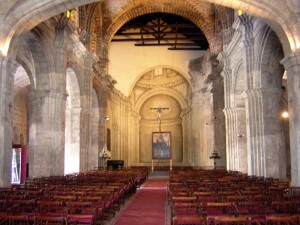
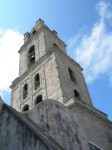
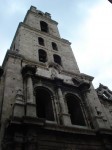
Conference Sub-Themes
Bringing together leaders and experts from around the world, we will explore the following topics, among others:
The Smart Management of Cultural Heritage. This is also an issue of the utmost importance in its own right, both for the developed world, and for countries with emerging economies. This relevant subject involves many challenges derived from several new trends in modern development that can negatively affect historic sites.
The Resilience of Traditional Types. The conference will explore how traditional buildings often survive better in severe events, contain important knowledge for new buildings, and are key resources for sustainable economic development.
We will also examine how similar beneficial (but poorly recognised) knowledge is contained in traditional urban forms.
The Need for Protection of the Traditional Urban Fabric. This important asset often attracts more economic opportunities based on its features such as layout, scale, mixed-use, urban structure and form, and architecture. Yet it is often degraded by modern development, operating under unregulated economic forces, or under poorly-examined policies of “appropriate” development “of its time.”
The Need for Protection of World Heritage Sites. Threats to major sites come from both natural and cultural changes, such as hurricanes, earthquakes and eventual sea level rising derived from climate change as well as from massive tourism. Disruptive new development can also severely damage the quality of world heritage sites.
Strategies for New Development in Historic Sites involves new economic approaches, new reforms of zoning and ordinances, and new policies that provide tools and resources for more compatible and supportive development.
The Need to Protect, and Add to, the Public Realm. The quality and quantity of public space is rapidly diminishing in many cities of the world. It is being replaced by privatized enclaves for higher-income areas; it is being damaged by careless planning for mixed-income areas, especially for streets and infrastructure; and it is often not created at all, or only in small quantities, within lower-income informal settlements. What can we learn from traditional patterns and types to help to ensure better quality and quantity of critical public space for the future?
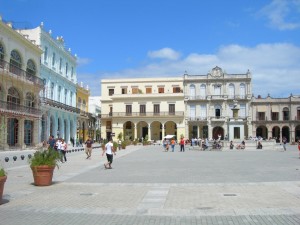
Plaza Vieja, Old Havana, completely restored by 2012
Case studies from different regions, countries and continents will be presented at the conference on the issues of the urban and architectural character of infill projects of different scale from a block to a neighborhood, town, city or region as well as world-wide urban extensions in both historic cities and landscapes, and new development sites. This involves at some point the need to re-examine the Venice Charter and the imperative for the analysis of needed reforms as a follow-up to the critique of the governing document for conservation of monuments and sites, the Venice Charter, first articulated at the 2006 INTBAU Venice Conference:
www.intbau.org/archive/venicecharter.htm
www.intbau.org/archive/venicedeclaration.htm
With enquiries about the tour, conference, and charrette, please contact:
Professor Julio Cesar Perez, INTBAU Cuba at jcaesar2010@gmail.com
Schedule
TOUR (Prior to conference)
Day 1: November 11th: Arrival in Havana for the International Study Tour
Day 2: November 12th: Old Havana Walking Tour
Day 3: November 13th: Havana Tour
Day 4: November 14th: Havana Tour
CONFERENCE
Day 1: November 15th: Opening session and reception in the evening (venue to be announced)
Day 2: November 16th: Conference
Day 3: November 17th: Conference and closing reception in the evening (venue to be announced)
CHARRETTE (After the conference)
Day 1: November 18th: Old Havana International Charrette
Day 2: November 19th: Old Havana International Charrette
Day 3: November 20th: Old Havana International Charrette
Day 4: November 21st: Morning: Presentation of Charrette
Afternoon / evening: Departure from Havana
Participants can register separately for the tour, conference and charrette, and attend one, two or all three events.
Havana Study Tour, 12-14 November, 2015. The Magic and Poetry of Havana
The International Study Tour will provide an introduction to the history of the urbanism and architecture of the capital city of Cuba, listed as a UNESCO World Heritage Site since 1982.
The expert guide will be Professor Julio Cesar Perez Hernandez, who has lectured widely in the US, Canada and Europe and has been a speaker at several INTBAU and C.E.U. international conferences across Europe. A Loeb Fellow at Harvard Graduate School of Design 2001-2002 where he was selected the 2012-2013 Wilbur Marvin Visiting Scholar, he was Visiting Professor at the School of Architecture of the University of Notre Dame in 2012 and at the Federico II University in Naples, Italy in 2011. Professor Perez Hernandez was Adjunct Professor at the School of Architecture in Havana from 1998 to 2006 and he is the author of two major books “Inside Cuba” (2006) and “Inside Havana” (2011), published by Taschen and also of “A Master Plan for 21st Century Havana”, a comprehensive urban project for the future development of Havana, besides of many articles edited by professional journals. His next two books on Cuban architecture and urban design will be published at the end of 2015. Julio Cesar Perez leads and organizes the Havana International Charrette on Urban Planning and Urban Design every spring -since 2007- and has led numerous Study Tours for international institutions and VIP along many years that include Harvard Alumni Association, The National Trust for Historical Preservation, The University of Notre Dame Advisory Board, The NYC Museum of Contemporary Art, The Metropolitan Museum of Art in NYC, The Cigar Club of Luxembourg, Vassar College, USC, The Fogg Museum Fellows, the Newark Museum, the Metropolitan Museum of Art of New York, The US Association of Museum Directors, Princeton University Art Museum, Exeter Museum, The Norwegian Ministry of Culture, and UCLA and Dartmouth College Alumni.
Old Havana Walking Tour
– Visit the 4 oldest squares of the city and the most representative colonial buildings around
– Plaza de Armas, XVI century with Royal Force Castle by Sánchez and Calona (1558- 1577), the Palacio del Segundo Cabo or Royal Post Office (1770- 1791), the Palacio de los Capitanes Generales (1776- 1791) by Antonio Fernández Trevejos and Pedro de Medina; the beautiful Santa Isabel hotel- where US President James Carter stayed when he visited Cuba in 2002- the former residence of Count of Santovenia from 1784 and El Templete from 1828 by Spanish Colonel Engineer Antonio Maria de la Torre.
– Plaza de San Francisco de Asís from 1628 with the baroque Church and Convent of Saint Francis of Assisi from 1735 and the 1908 Stock Exchange by Tomás Mur built by the famous US company Purdy & Henderson in a record time of only 16 months. Visit also the Custom House by US firm Barclay, Parsons and Klapp from 1914 along the Bay of Havana.
– Plaza Vieja where the restoration process is best explained with a stop at a special corner restaurant which is the museum of beer in Havana. Visit the 1735 Casa de Condes de Jaruco with the most beautiful stained glass windows in Havana and walls with the original friezes..
– Plaza de la Catedral. Visit the Casa de Condes de Bayona from 1725- currently the Museum of Colonial Art of Cuba- and the Casa del Marqués de Arcos, Casa del Conde de Lombillo and Casa del Marqués de Aguas Claras, all from XVIII Century and the Cathedral, the greatest example of Cuban Baroque from 1777.
The Walls District (XIX century/ early XX century) Walking Tour
– Visit the Parque Central where the 1879 England hotel is, the Neo- Moorish 1908 Seville Hotel, the 1914 Casino Español, the 1915 Great Theater by Belgian architect Paul Belau who also designed the former Presidential Palace in 1920 -currently the Museum of the Revolution- and the across the park 1925 Centro Asturiano designed by Spanish Architect Manuel del Busto -currently the Fine Arts Museum.
– Walk along the world wide famous1929 promenade El Paseo del Prado, inspired in the elevated plaza concept and considered one of the best open spaces in the world by French Landscape designer J.C. N. Forestier who also designed the nearby Park of Fraternity and Avenida del Puerto (Harbor Avenue) and also the 1929 Capitolio gardens.
– Visit the former Bacardi Headquarters Building from 1930 (the Jewel of Art Déco in Cuba).
EL VEDADO Walking Tour
– Visit The Garden City of El Vedado -planned in 1859-60 but not developed until early in the XX century- according to modern planning principles is still considered the most important urban initiative since Colonial times. Laid out by Spanish Engineer Luis Yboleon it’s also considered the birth of modern planning in Cuba as it introduced the green in the city for the first time and it provided a very effective model for separating the private and the public realm. El Vedado, a perfect grid rotated 45 degrees to the North to better catch the prevailing breezes and avoid the sun marked the birth of modern planning in Cuba together with The Walls district.
– Visit the 1906-40 University of Havana, and walk along La Rampa district, the Napoleon´s Museum, a Florentine style villa designed by Cuban architects Govantes and Cabarrocas and the famous 1966 Coppelia Ice Cream Parlor. See the 1950s hotels -such as the former Hilton Hotel designed by California architectural firm Welton Becket & Associates in 1958.
– See Art Déco and Streamline Moderne style apartments influenced by South Beach in Miami, and modern cinemas like the 1947 Radiocentro building designed by Junco, Gaston and Dominguez. Also mixed-use buildings such as night clubs, restaurants and shops with housing on the upper floors as well as taller office buildings in the area such as the Award winning 1953 Odontological Building and the 1958 Ministry of Public Health both designed by late Cuban architect Antonio Quintana Simonetti. See the 1956 FOCSA building designed by Ernesto Gomez Sampera and Martin Dominguez, considered the best reinforced concrete apartment building in the Americas in the 1950s and learn about its negative urban impact.
– Visit the 1930 National Hotel designed by US architects McKim, Mead & White.
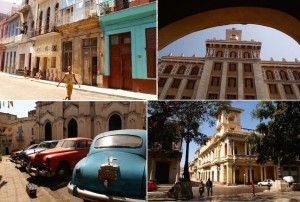
“Resilience and the Value of Heritage: Learning from Historic Cities”
Havana, Cuba, 15-17 November 2015
The International Conference is organized and led by the Cuban Chapters of INTBAU and the CEU (Council for European Urbanism).
Main organisational contact:
Julio Cesar Perez, INTBAU Cuba
jcaesar2010@gmail.com
Tel +1 574 343 6549
Academic Programme
• The Management of Cultural Heritage is an issue of the utmost importance for both the developed world and countries with an emergent economy as it involves many challenges derived from new trends and tendencies in developments that can affect historic sites.
• The Resilience of Cities and the Value of Heritage witness how traditional buildings often survive better in severe events, contain important knowledge for new buildings, and are key resources for economic development.
• The Need for Protection of the Traditional Urban Fabric often attracts more economic opportunities based on its features such as layout, scale, mixed-use, urban structure and form, and architecture.
• The Need for Protection of World Heritage Sites involves both Natural and Cultural interaction such as eventual sea level rising derived from Climate Change due to Global Warming.
• The Strategies for New Development in Historic Sites involves new economic approaches, new revision of the zoning and ordinances and new policies derived from the former.
The conference will also address sustainable urbanism and its current practice and importance, traditional urban patterns and their impact on modern urbanization throughout the world, the role of urban planning and architecture in the context of global warming and climate change, and the usually skipped contextual relationship within the current world financial crisis.
Case Studies from different regions, countries and continents will be presented at the Conference on the issues of the urban and architectural character of infill projects of different scale from a block to a neighbourhood, town , city or region as well as world-wide urban extensions in both historic cities and landscapes and heritage protected sites.
It will also address sustainable urbanism and its current practice and importance, traditional urban patterns and their impact on modern urbanization throughout the world, the role of urban planning and architecture in the context of global warming and climate change, and the usually skipped contextual relationship within the current world financial crisis.
The International Conference will explore the validation of concepts as a follow-up to the critique of the Venice Charter at the 2006 INTBAU Venice Conference.
www.intbau.org/archive/venicecharter.htm
www.intbau.org/archive/venicedeclaration.htm
Key current issues in management planning for properties of cultural heritage will be addressed. One if these issues will be “Disaster Preparedness”; the securing of historic cities and preventive conservation against the effects of climate change, extreme weather, earthquakes and other disasters.
The International Conference will use a working format of keynote speeches, lectures and case studies to achieve a better debate and comprehension of the issues to be exposed.
INTBAU Urban Design Charrette: Old Havana, November 18-21, 2015
Participants at the INTBAU Conference in Havana, November 15-17 2015, are invited to join an optional, post-conference International Old Havana Charrette, to be held from November 18-21.
The Charrette will build on work completed over the past eight years during the annual Havana Charrettes organized and led by INTBAU Cuba and INTBAU Scandinavia. Our previous Charrettes have brought together participants from Cuba, Australia, UK, US, Canada, Colombia, Norway, Sweden, Germany, Italy, Portugal, Spain, Slovakia, Argentina, Mexico and other countries.
The Charrette is designed for architects, planners, art historians, antiquarians, writers, students and anyone with an interest in the history, traditions and culture of Cuba.
You can read a report from the March 2014 Charrette here:
www.havana-live.com/news/2014/05/15/focus-el-vedado-2014-havana-urban-design-charrette.html
Old Havana Charrette
International architects and planners and other INTBAU members are invited to join Cuban experts and local residents to develop proposals for the regeneration and development of parts of Old Havana, a UNESCO World Heritage Site.
The Charrette will fit both educational and professional purposes and will give participants an introduction to the history of Havana’s cultural heritage through close contact with its traditions, architecture and urbanism. The Charrette seeks the participation of individuals who share a respectful attitude to new interventions in historical contexts, and who value the creation of places humans can live in, work in and enjoy.
OBJECTIVES
• Elaborate ideas for the development of different sectors of Old Havana.
• Promote an integrated vision between the natural condition and the built environment.
• Promote and highlight the importance of Old Havana for the new image of Havana and for granting continuity to the city’s social and cultural integration among the different neighborhoods.
• Evaluate the benefits of the transformation of the district of Old Havana for the future of Havana in both economical and urban terms and their impact in the city and the population.
• Improve the quality of life of the inhabitants of the district of Old Havana
• Propose the increase of urban open space, housing and commerce in the area.
• Turn the current dilapidated image of several parts of Old Havana into a contemporary and joyful one where both foreigners and local people can work, rest and relax.
• Reinforce the cultural identity of Old Havana within the city of Havana.
Charrette Schedule
November 18th: All day: Charrette, site inspection, initial presentation and studio work
November 19th: All day: Old Havana Charrette. Studio work
November 20th: All day: Old Havana Charrette. Studio work
November 21st: Morning: Presentation of Charrette results
Afternoon / evening: Departure from Havana.
A Charrette is an intensive planning workshop where citizens, designers and others collaborate on a public vision for future development. It provides a forum for ideas and offers the unique advantage of giving immediate feedback to the designers. More importantly, it allows participants to become collective authors of the plan by launching ideas about the site.
Registration Fees and Costs
With questions about the tour, conference, and charrette, please contact Professor Julio Cesar Perez Hernandez via email at jcaesar2010@gmail.com or directly by phone at +1 574 343 6549 (US cell phone number).
Click here to register for the tour (£165)
Click here to register for the conference (£200)
Click here to register for the charrette (£165)
You can also register here for all three events (£500 – a discount of £30)
Information for the INTBAU events in Havana, Cuba, November 2015
Travelling to Cuba: Accommodation and Visas
Participants are responsible for their own travel to Cuba, accommodation and meals. While you will be responsible for getting your own accommodation in an international style hotel in Havana, we can provide you with some information to allow you to arrange it in private apartments (Casa Particular) which is a popular alternative for participants seeking a different experience and more contact with Cuban families.
Participants are asked to arrange their own flights. Airlines with connections from Europe include Air France, British Airways, Iberia, and Virgin Atlantic (from London). There are also flights to and from the US (Miami, New York, LA and some other cities in the US) besides from several cities in Canada, Mexico and almost all Latin American countries.
US travel agents are familiar with American citizens traveling to Cuba under the so-called 14 authorized categories that include educational trips. INTBAU’s Secretariat in London will provide Americans with a Letter of Invitation once you have registered, which the travel agent will use for getting you the visa. We advise you to start the traveling procedures as soon as you have decided to participate in the events as it sometimes takes several weeks to have a visa issued due to unexpected situations.
We have had US participants for all our previous International Study Tours and Havana International Charrettes since 2007, including our most recent one, successfully held in March, 2015. Due to currently existing restrictions from the US State Department, US citizens will have to travel under either a general or a specific licence as mentioned above.
Most of the US participants have traveled under a general license (participation in an international professional event held in Cuba, and organized by a non-Cuban organization) that grants legally traveling to Cuba.
For further information, please go to the website of the United States Department of the Treasury Office of Foreign Assets Control. You may email us or contact one of the travel agencies in Miami, Florida, listed below for additional information.
• YUMA EXPRESS Charters
• ABC Charters,
• Xael Charters
You will need a tourist visa to visit Cuba if you are traveling from Australia, Europe, Asia or Latin America and it needs to be issued before you arrive in Havana. Please check online with the relevant issuing authority for the country in which you are based.
